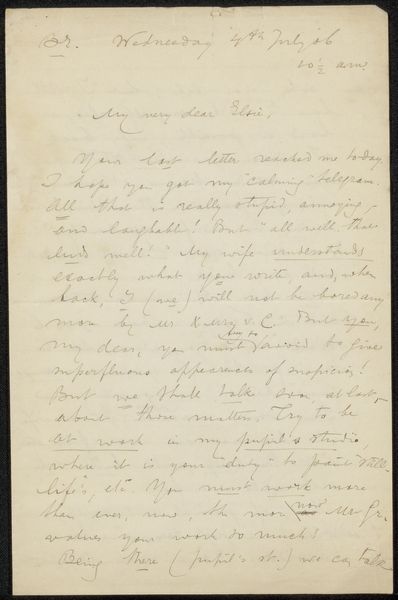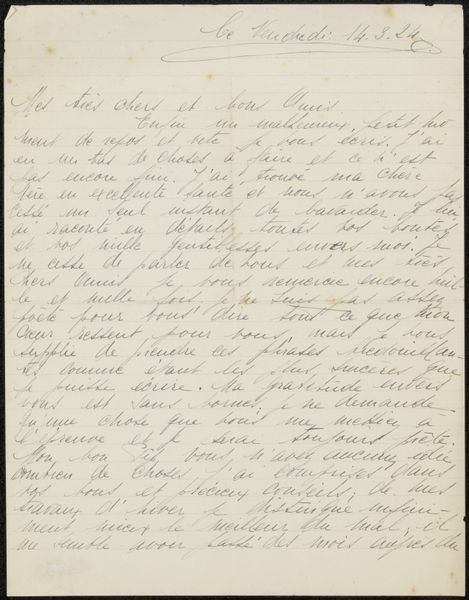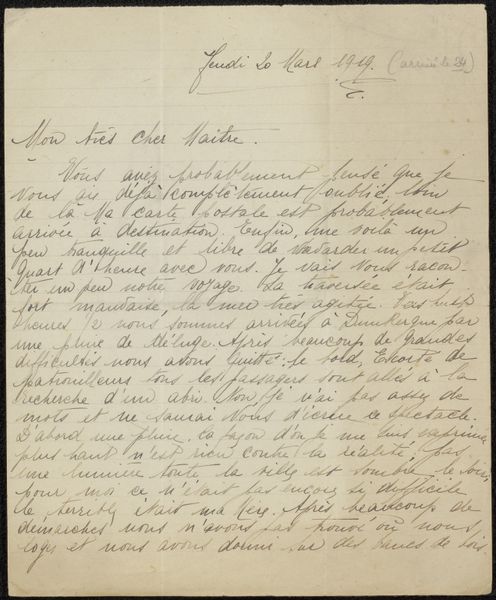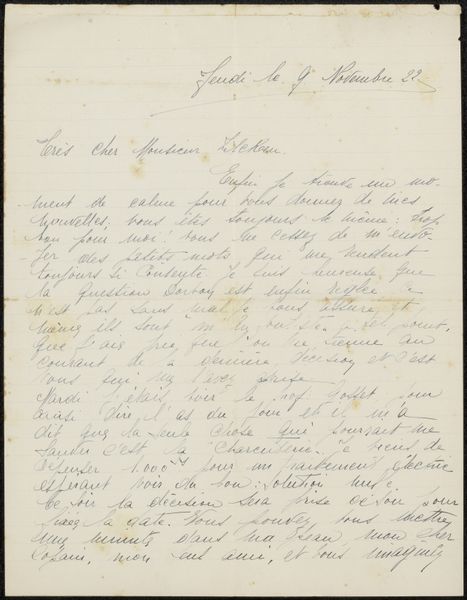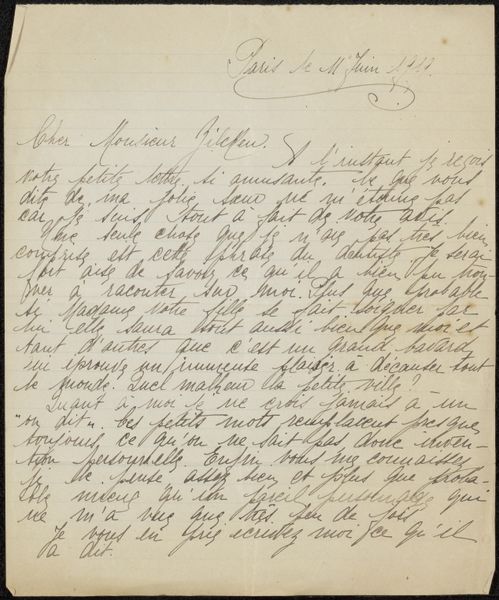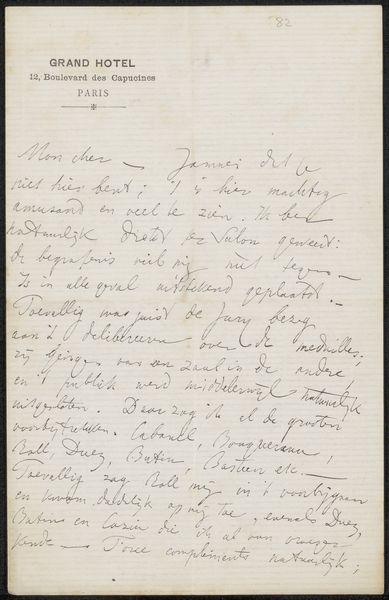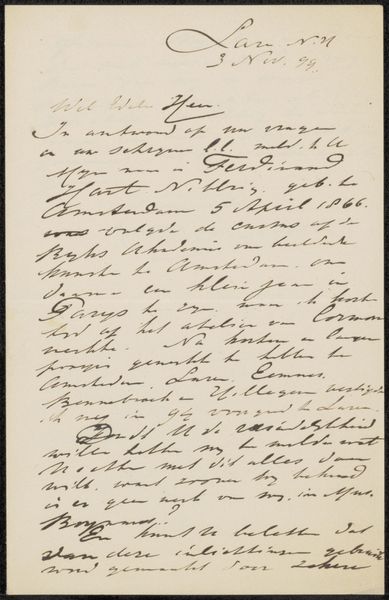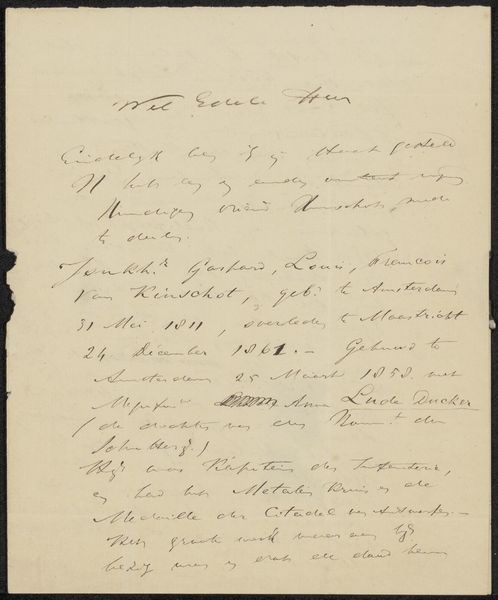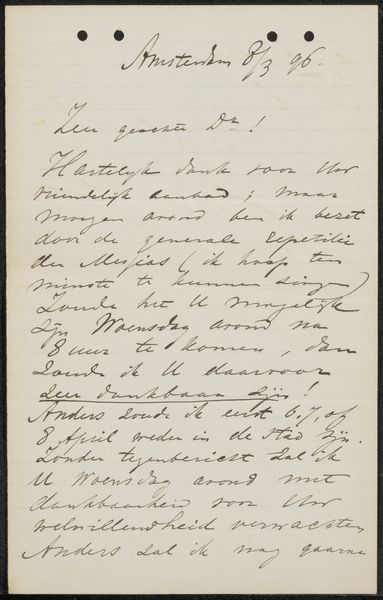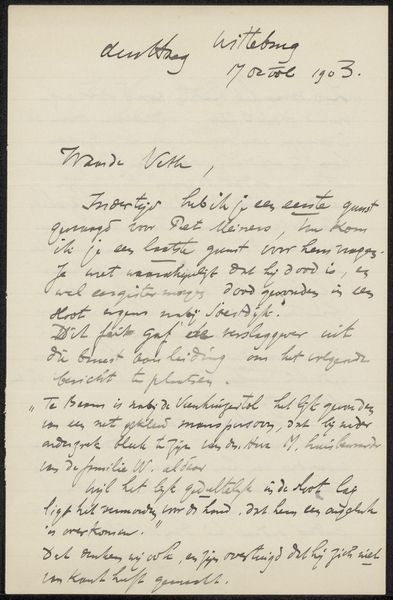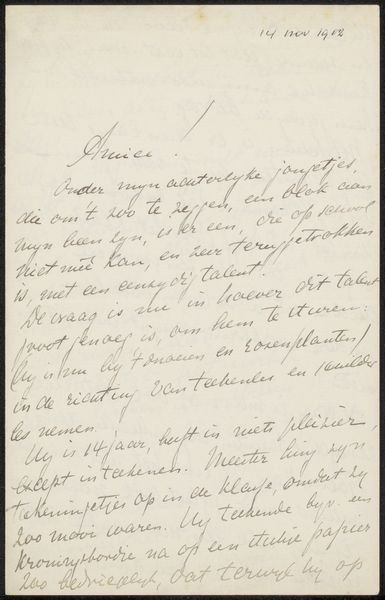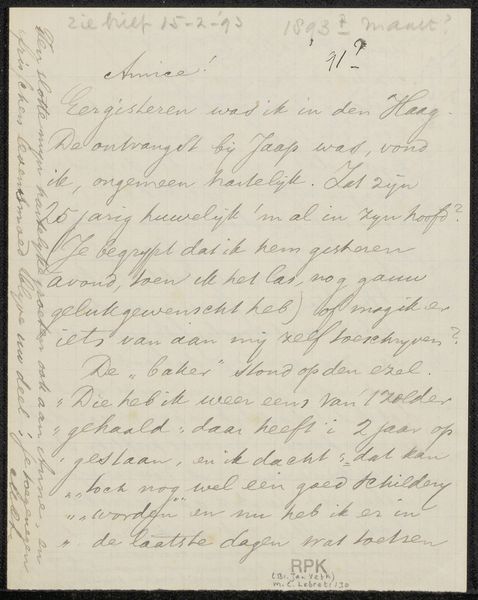
drawing, paper, ink
#
drawing
#
paper
#
ink
Copyright: Rijks Museum: Open Domain
Curator: Here we have what is titled "Brief aan Philip Zilcken," a letter rendered in ink on paper, likely created between 1911 and 1930. I'm immediately struck by the intimate feel of it. Editor: Yes, I see that. There’s a fragility, a sense of quiet yearning perhaps? The handwriting itself tells a story of connection and distance. It almost feels voyeuristic to be reading someone else's mail, as though we've breached their privacy. Who was Philip Zilcken to the writer, and why were these words so carefully etched onto the page? Curator: From the lettering, it seems an incredibly personal missive—a momentary portal into the long-forgotten world that lived inside its author’s mind, what dreams and yearnings spilled from their consciousness when composing it. I imagine there must've been profound consideration that went into such an artistic rendering—rather than composing on the machine and firing off an impersonal, immaterial communique, the author of this drawing committed their letter with ink, almost carving its delicate features onto the page, breathing life and significance into its purpose, preserving it for ages! Editor: Indeed. Letters themselves were more than mere conveyances; they were material testaments to relationships and cultural memory. The date "27 Avril 22" – April 27, 1922 – situates this artifact within a specific historical context, only a few years following The Great War. Letters during those turbulent times became even more crucial as lifelines of contact. We can deduce from the handwriting the possibility of a connection built on affection and, perhaps, class privilege, judging by the familiarity expressed. Curator: To ponder what world its author might be seeing when writing—are these words traveling to new pastures? Did they leave traces on the minds of Philip Zilcken after landing in his care? How profoundly might one share their soul through mere markings left on parchment, for they serve a similar purpose as the drawings from our ancestors left within caves. I would argue this document to be both letter and map, providing not geographical, but soul guidance between its author and receiver, through thought and empathy. Editor: Absolutely, this isn’t merely about an aesthetic experience but about recovering histories, the daily lived realities of people during and between monumental epochs. Curator: The weight and emotional content is all but written on its visage! Editor: Yes, it carries palpable humanity that extends far beyond its visual beauty. Thank you. Curator: You're most welcome, indeed!
Comments
No comments
Be the first to comment and join the conversation on the ultimate creative platform.
